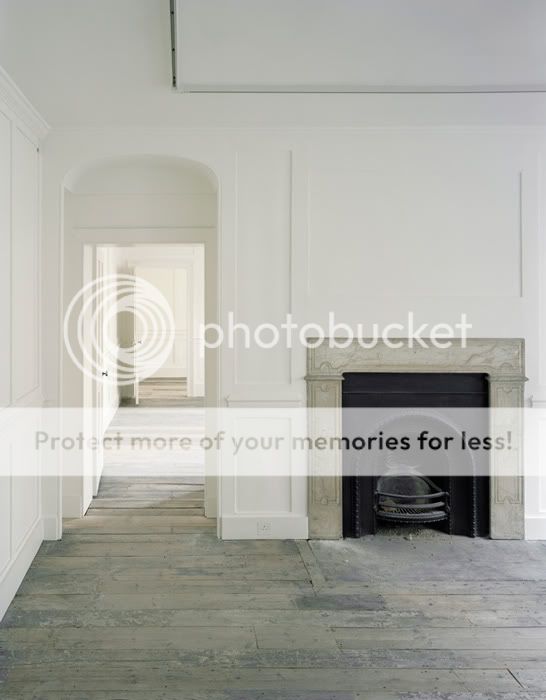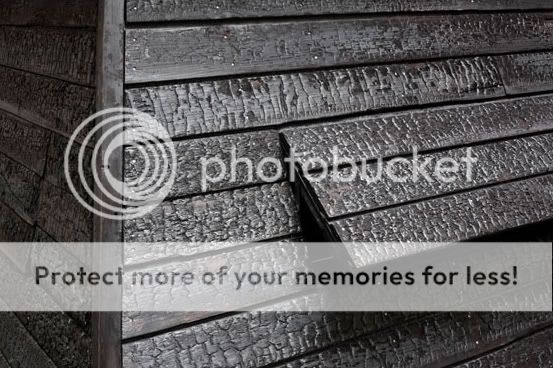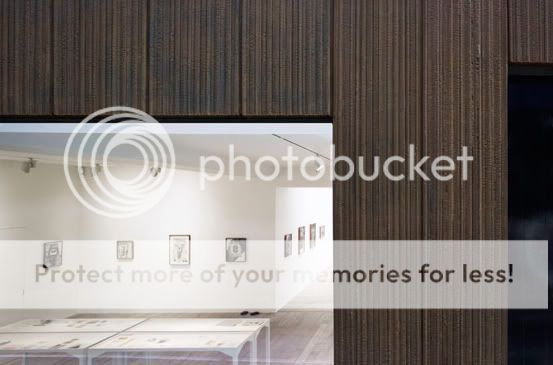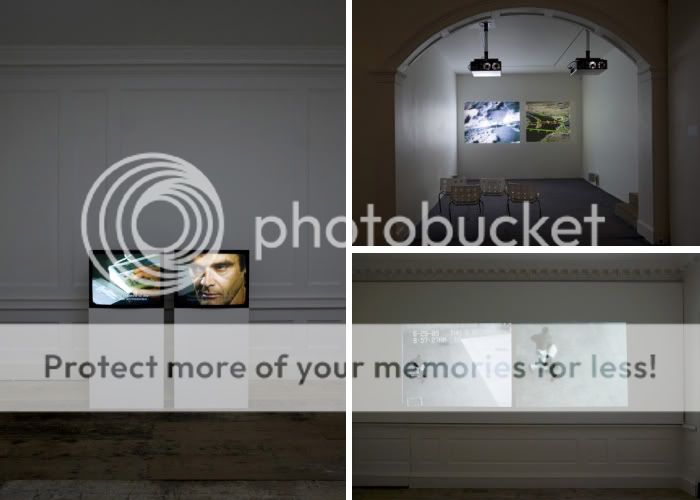
This week's lecture at university was by Tom Emerson, who is a director at 6a Architects, and he talked us through a recent project. Raven Row is a new non-profit exhibition centre in London located in two 18th century silk mercers' houses in Spitalfields. The building incorporates contemporary art galleries, two flats for artist residencies as well as studio space. 6a Architects totally renovated the existing buildings and created two new galleries in an excavated basement.
The building was ravaged by a fire in the 1970s. Every part of the building was covered in a thick layer of char, but surprisingly the ornate features were not totally destroyed and could be restored.
The notion of burning is a recurring theme throughout the project. Inspired by a traditional Japanese method of cladding buildings with burnt timber, the architects carried out a series of experiments. Surprisingly, charred wood protects a building from fire (as the wood cannot burn twice) and is very resilient to the elements. Part of the roof is clad in burnt cedar which can be seen from various points around the building.
Burnt timber is resilient to the weather, but it will soon disintegrate if touched. They cast the charred timber in iron and used this on one of the façades, which introduces the texture of burnt wood but in much more hard wearing material.

The staircase in the new basement was inspired by a traditional 18th century cantilevered staircase, and they designed and cast a modern version in concrete. It's incredible that each step overlaps by only a few millimeters but is so strong. There is a 'swelling' at the end of the balustrade which is a reference to a traditional scroll.
The most amazing aspect of the project is that they actually managed to find one of the original Rococo interiors in America and reinstall it! After the war, many 18th century rooms in England were striped and sold to America. The interior panels were shipped back in several packages, and over a period of 6 weeks the room was pieced back together. It's ironic that this interior was absent during the 1970s fire, and as a result it is the only completely intact interior in the building.
This entire project is inspired by holding onto lost stories and memories of the building. Some of these stories are based on word of mouth, such as incidental facts from a lady who lived in the building her entire life, and others are based on a catalogue of photos they discovered in the London Metropolitan Archives.
There are many layers of history on this site and prior to the 18th century building there was a building dating back to the 16th century, and some of these original fireplaces still remain. Tom likened the building to a palimpsest.
In keeping with the notion of trace, they designed door knobs that incorporate a thumb indentation, which brings a beautiful tactile quality to an every day object.

It was most interesting when Tom explained that the narrative of the project evolved naturally, and it wasn't until they reflected several months later that they discovered everything they had added to the building was either burnt or cast. He said that if something is too premeditated the project becomes inflexible. At university we are told not to post-rationalise, but their method of acting on instinct and reflecting later has produced a really elegant and honest building. The pieces of the puzzle came together naturally as they discovered more stories about the building.
Tom said that although there is an underlying narrative, it was never presented to the client in this way. The client needs to know how the building will perform as a gallery, and how the money is being spent. As an architect he needs to be able to speak about the same project in a variety of ways for different audiences (e.g. client, colleagues, builders, planning officers).
This was the most inspiring lecture so far (which is evident from the length of this post!) and I'm planning to visit the gallery soon. At the moment there is a film exhibition by Harun Farocki and the rooms are very dark. The screens and projectors provide a similar level of light to the flames from fireplaces that would have been used in the 18th century, so it's an exciting and unusual time to experience the space.
[Images: Raven Row & 6a Architects]










6 comments:
very neat! great post. That is crazy that they were able to find the old pieces and put them back together! crazy! Damn Americans, stealing your architectural history:)
That's so interesting. I never would have thought about using charred wood, and the texture that's created when its covered in iron makes me want to touch it. I love too that they use lighting in the gallery that mimics period lighting.
How very cool ~ I want to take this class right next to you; it's so interesting to learn all the history that is put into a *new* renovation ~ lovely!
Wow this looks amazing. I've always thought it was strange and interesting that entire walls and ceilings get shipped from country to country depending on the fashion of the time and who has the money.
Such an interesting post. Thanks very much - I really enjoyed everything you said.
Well it looked very conserved and with the re build looks even better, thanks for share.
Post a Comment